What Customers Really Want When They Invest in IT
Whenever someone buys a product or service, they have an
outcome to achieve. Think about anything people spend money on,
and there’ll be an outcome that it addresses. They buy a
hamburger to be full; they buy a movie ticket to be entertained;
they buy a sports car to be noticed.
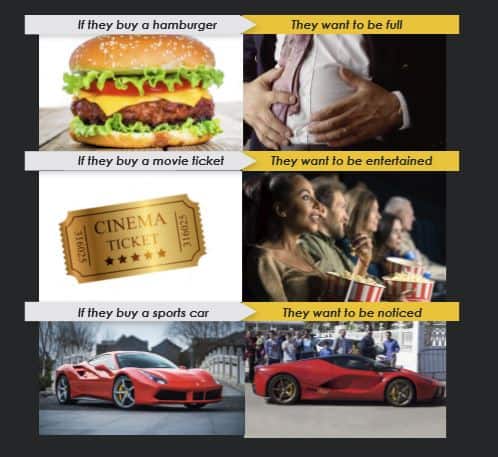
The same is true in business. There’s always an outcome a
business wants to achieve when they buy something. And that’s
doubly important when the business invests in IT.
Two Types of Outcome
Product Outcomes and Success Outcomes
In business, there are two types of outcomes.
Product Outcomes are the direct benefit of using a product or
service. In IT, we work hard to show the direct value created
when a customer uses our products or services.
But getting an IT product working isn’t the outcome the
customer wants. There’s a bigger outcome they want to achieve.
The product outcome is a means to an end, not an end in itself.
We call the bigger outcome the customer wants to achieve the
Success Outcome. It’s what the customer considers success to be.
Product Outcomes
are the direct
benefit of using a
product or service.
Success Outcome
is the bigger
outcome the
customer wants to
achieve.
To illustrate, imagine someone going to a hardware store to buy a drill bit. The hardware
store manager knows the person doesn’t want to own a drill bit for its own sake. The
person wants to drill a hole in the wall. The direct benefit of owning a drill bit is the hole
in the wall. The hole is the product outcome.
But the customer doesn’t want a hole in the wall for its own sake either. They want to
hang a photo or picture – perhaps a family photo. The family photo hanging on the
lounge room wall is the success outcome.

Restaurants provide another example. The restaurant offers good food and service. People
will go to the restaurant to enjoy the food and service. Enjoying the food is the product
outcome – the direct benefit of the restaurant’s product and service.
But people don’t go to the restaurant for the food alone. They go for an enjoyable evening
with family or friends, or perhaps for a business meeting. The success outcome is a good
evening out, or a successful business meal. Enjoyable food is part of the equation, but not
enough by itself.

The relationship between product
outcomes and success outcomes
looks like this –
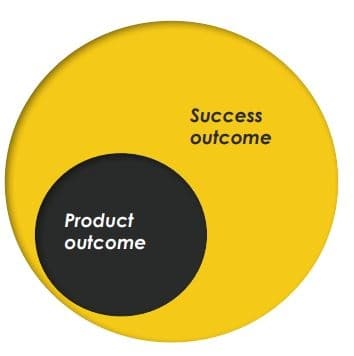
Characteristics of a Success Outcome
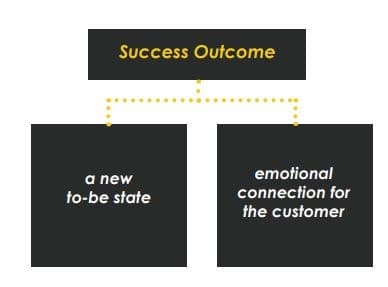
A success outcome has two elements. First, it describes a new to-be state. When people buy a movie ticket, the to-be state they hope for is ‘entertained’. When they buy a drill bit the to-be state is a family photo hanging on the wall; when they go to a restaurant the to-be state is a great night out.
Second, the success outcome has an emotional connection for the customer. The to-be state is something they want. The person hanging the family photo wants to feel the satisfaction of hanging the photo. The restaurant goers want the emotional connection with family or friends or the strong business connection.
A success outcome, when achieved, delivers both elements – a new to-be state and emotional satisfaction.
Success Outcomes Have a Little of Steve Jobs
Customers want to achieve a success outcome, not a product outcome. So, vendors must choose a success outcome they serve. They must be able to describe the to-be state they can help the customer achieve. An IT vendor considering the success outcome they serve might be tempted to simply ask the customer. While the customer must eventually agree with the success outcome, asking them upfront isn’t the right timing. Steve Jobs famously said “You can’t just ask customers what
they want and then try to give that to them. By the time
you get it built, they’ll want something new.” (1) The same is true of success outcomes. Vendors choose their own, then test their choice with the customers. They base their choice on the mix of products and services they offer. And things they could add. Their objective is to create a unique mix that will differentiate them
in the market. So, vendors must first choose their own success outcome, just as Steve Jobs did when designing products. Then they can ask customers for feedback.
“You can’t just ask customers what they want and then try to give that to them. By the time you get it built, they’ll want something new.“
-Steve Jobs
10-Syllable Rule
Vendors should describe the success outcome they serve in ten syllables or less.
Success outcomes should be described succinctly. They need to create an image, a clear idea of the to-be state the customer wants. The success outcome should capture the imagination of the customer. Vendors have learned to capture the success outcome in a few words. They don’t use a lengthy sentence. They also don’t include any jargon or technical wording – the words make sense to business end-users. They’ve learned to describe the success outcome they serve in ten syllables or less.
How Are success outcomes used by a Vendor?
Success outcomes affect all customer-facing parts of the vendor’s business. Marketing uses the success outcome as the foundation for content marketing and campaigns. They show the market the importance of the success outcome to customers, and then show how they are best placed to enable the success outcome for the customer.
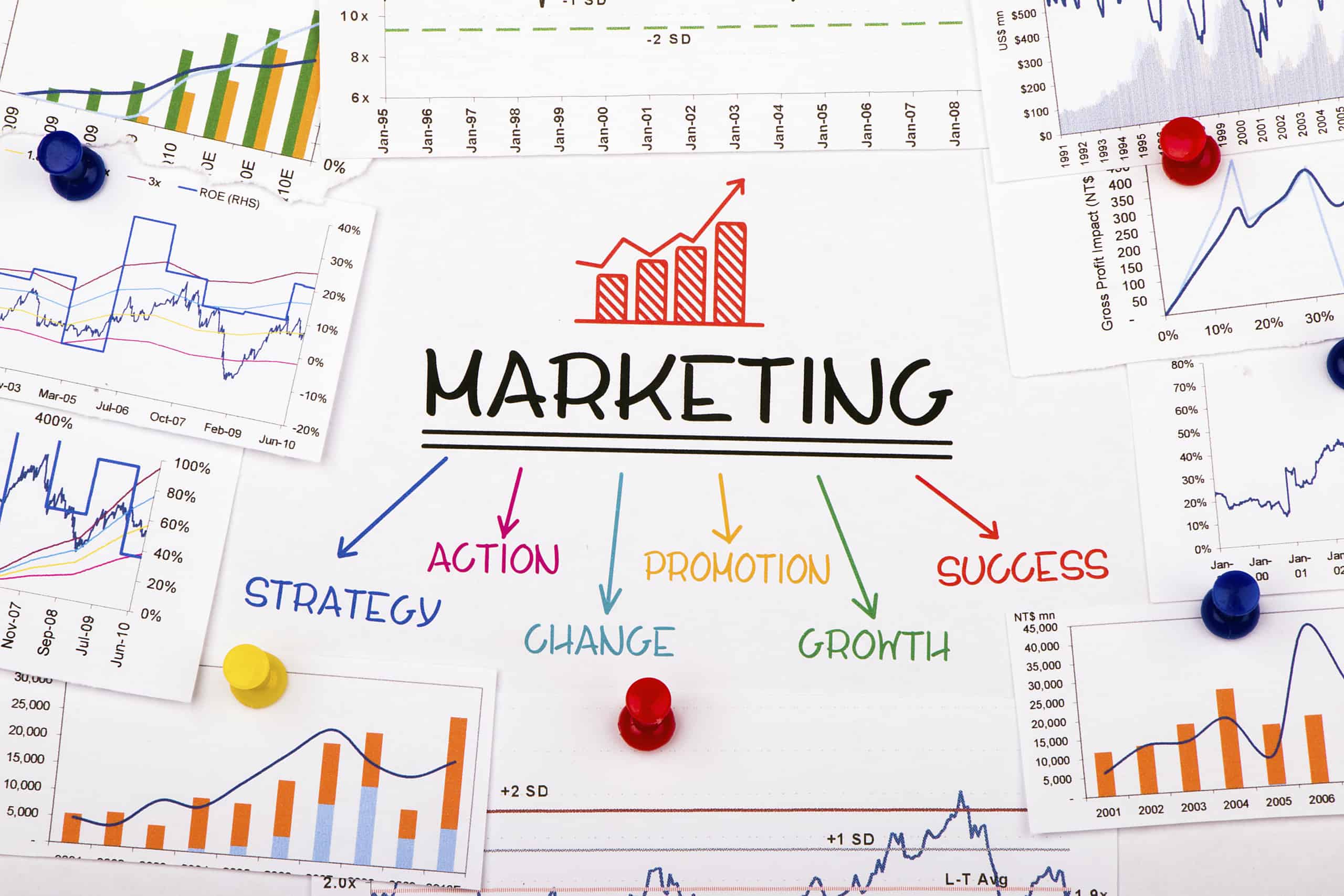

Sales use the success outcome as the foundation for discussion with existing customers, particularly business executives. Executives aren’t interested in products. But they are interested in success outcomes.
Sales also use success outcomes when selling new business deals (new logo or net new deals). They use the success outcome to differentiate. Their competitors are talking about products
and solutions to current problems. Success outcomes paint a picture of a future to-be state. And that future to-be state will be something the prospect wants. Success outcomes help vendors look different and better than their competition.
Services use success outcomes to drive projects. Each project needs a joint business objective that improves the success outcome and support can play a stronger role in tracking results. In the Cloud, Support can see a lot of what’s happening in the customer. And can provide reports and measures.
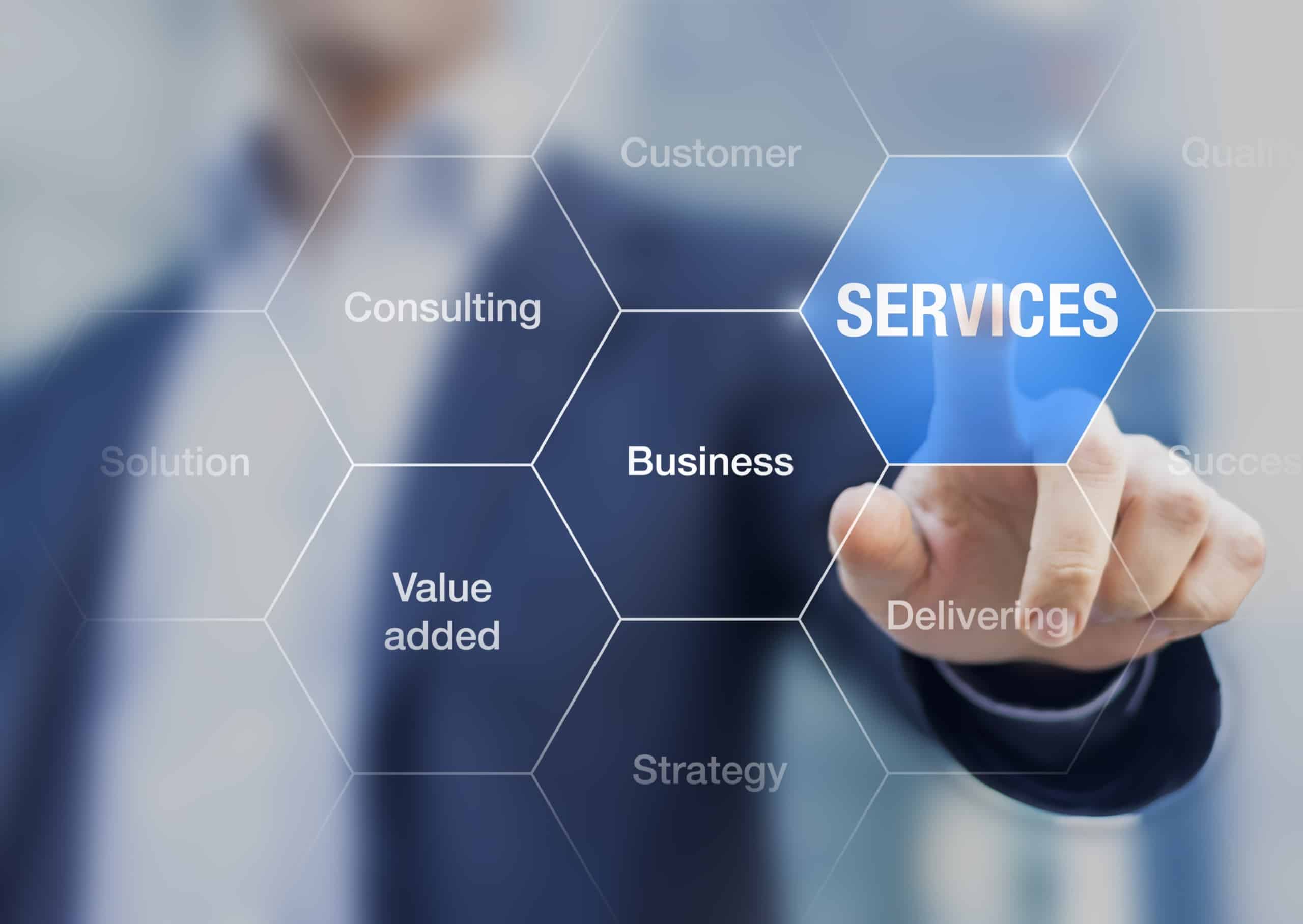
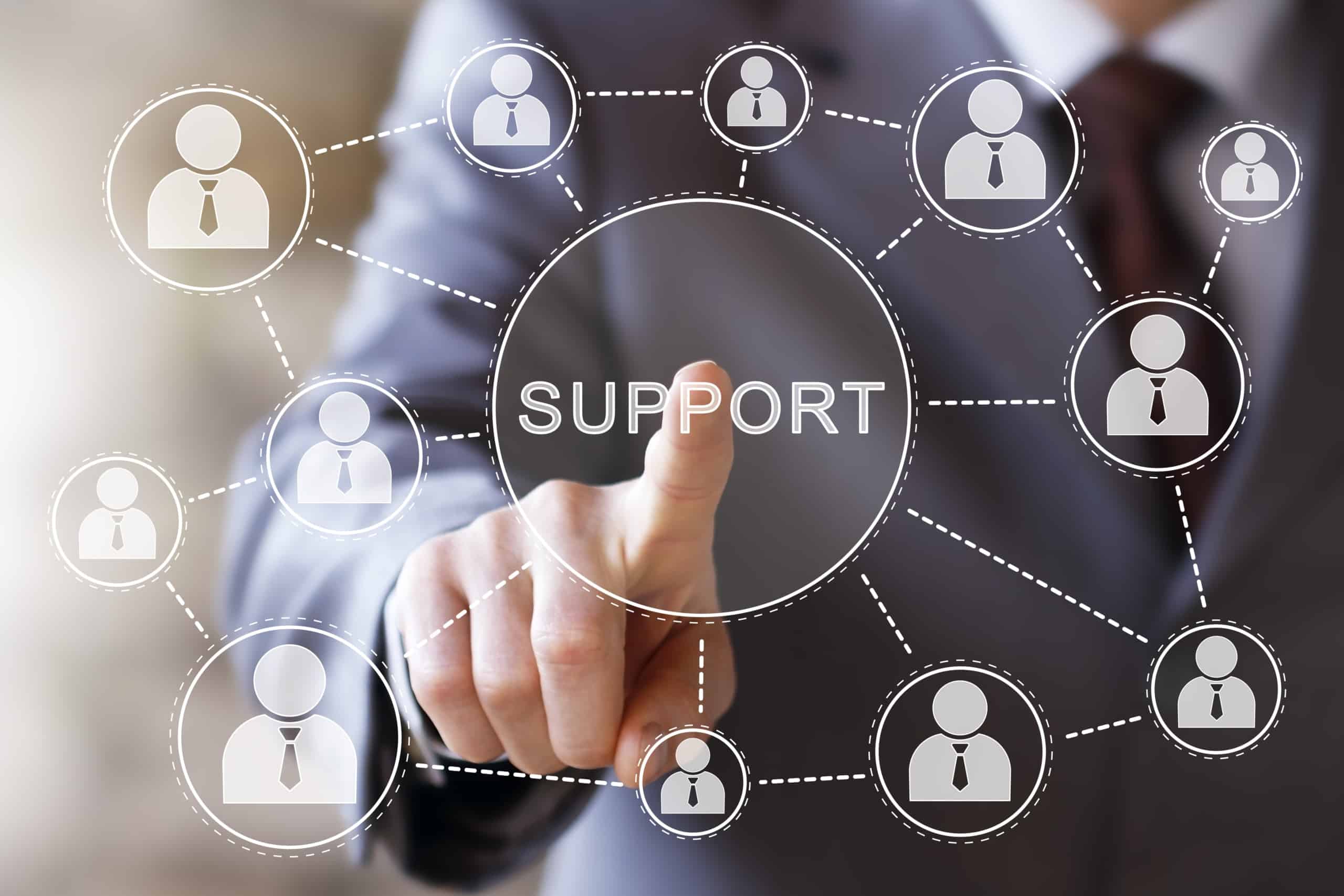
+61 1300-859791
pjh@outcomeleaders.com
facebook.com/outcomeleaders
linkedin.com/outcomeleaders
youtube.com/outcomeleaders
Receive the latest on Outcome-based Customer Success |
Send us a Message
Error: Contact form not found.

